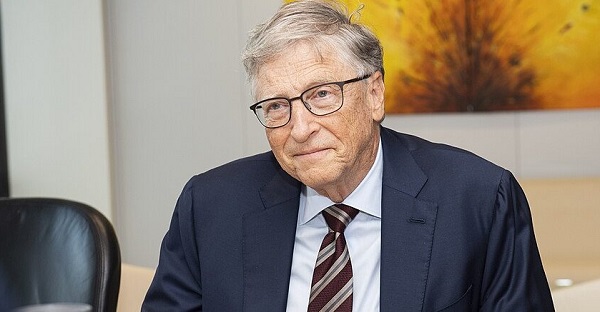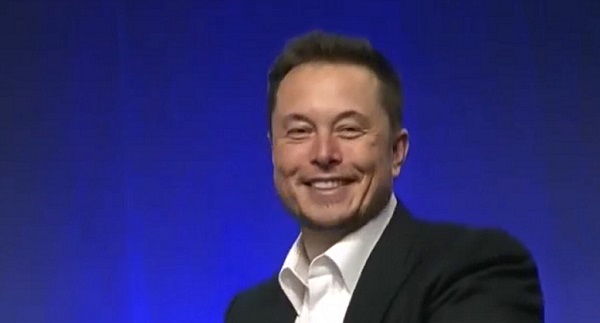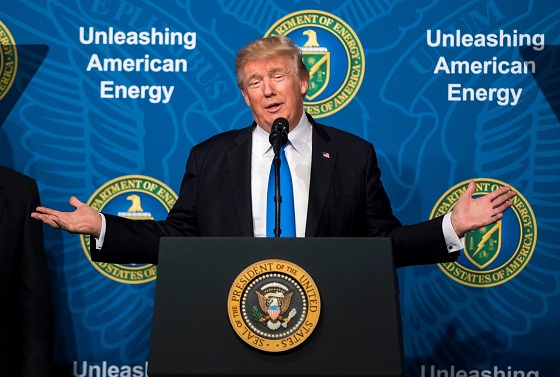Business
Hurricane Donald, Or Not, Canada Should Have Fixed These Problems Long Ago

By Jeremy Nuttall
Jeremy Nuttall, former Toronto Star investigative reporter, argues “In recent years the U.S. has been solving problems the Canadian government wasn’t interested in.”
The nerves have been frazzled north of the border here in typical Canadian style, in the wake of the election of Donald Trump as president of ‘those’ United States. As Robin Williams famously said, Canada is like a really nice apartment over a meth lab.
And now, a significant swath of Canadians are reeling from the election of a man who has so many failings, both with his character and ethics, running the most powerful nation on Earth, with whom we share a border. It has understandably sparked a doomsday scenario in the minds of many Canadians.
But if you’re looking for a way to work out this nervous energy, here’s an idea: help put Canada’s house in order. This apartment isn’t as nice as the late Mr. Williams would have us believe.
Trump’s first term as a U.S. president saw many guardrails and civil servants prevent him from enacting his full agenda. The U.S. institutions did a decent job of mitigating damage. Oh, how nice it would be to see such gumption in the halls of power in Canada. But we don’t, and that makes this country even more susceptible than the Americans are to the whims of any nefarious would-be ruler.
In recent years, the U.S. has been solving problems the Canadian government either wasn’t interested in, didn’t know about, or, most likely, didn’t care about.
The money laundering charges against TD, taking a stand on issues related to Beijing, including foreign interference, and acting to stop slave-labor-made goods from entering the country while Ottawa did nothing are just a few examples. Say what you want about the U.S.; they forced Canada’s hand on these issues or drew attention to our country’s inaction.
But that’s likely over for now, and if you’re really worried about the perils of a Trump-style candidate ever coming to Canada, you should be aware this country has already had the kind of scandals Trump’s next presidency is predicted to bring.
What do I mean?
Foreign interference, money laundering, cronyism, and the breaking of our transparency laws are commonplace. We have an opacity problem combined with institutions less resistant to scumbaggery, and anyone with enough power and little conscience could really manipulate them if they so wished.
Examples? Sure. We can start with the government refusing to hand over all the documents as ordered by Parliament related to Sustainable Development Technology Canada. The Liberals’ refusal to give up such documents has had Ottawa in gridlock for months. Doesn’t that sound like something a Trump-style candidate would do?
We found out last month that, after Liberal Party supporters chastised “illegal CSIS leakers” for giving evidence the PMO chose to ignore to the media, Trudeau’s national security adviser and deputy minister of foreign affairs leaked information about India’s potential involvement in the assassination of a Sikh leader to one of the biggest U.S. media outlets going, The Washington Post. I haven’t seen any demands for an investigation into that.
We’ve also recently had the Greenbelt scandal in Ontario, the ArriveCAN scandal, and B.C.’s money laundering inquiry revealing how white this country can make your green. The RCMP, meanwhile, more frequently doesn’t release basic information about crimes, including the names of homicide victims (an important, though somber, matter of public record).
Then there’s the increasing liberties being taken with our systems of government by those in charge of it. Wab Kinew’s Manitoba NDP booted a lawyer out of caucus because someone in his firm—not even him—is defending Peter Nygard in his sexual assault trial. Kinew apologized after uproar from legal groups, but the move draws into question how important the right to a defense and its importance to the justice system is for that government.
Over in Alberta, Danielle Smith is making anti-vaxxers feel special by crafting legislation specifically protecting them from workplace vaccination mandates, in what is obviously a politically driven waste of public resources.
Last week, we learned the CRA apparently orchestrated a “witch hunt” to find out who dropped the dime on their false reimbursement scandal. And while we’re on the CRA, you may recall more than 230 CRA civil servants were fired earlier this year for falsely claiming CERB.
It goes on, and, as bad as all that is, what’s worse is how our political parties have, without any real opposition, politicized our civil service.
ATIPs and FOIs aren’t returned within legislated timelines as staffers thumb their noses at the media and public. There’s a sense of entitlement to use public funds and information for political advantage, and it’s just ignored by the public. Our government ministerial positions are more frequently filled with career ladder-climbers rather than seasoned professionals with a proven track record before entering politics.
Going back further, Jody Wilson-Raybould was tarnished for not toeing the line in the SNC Lavalin Scandal. Our former ambassador to China effectively took China’s side in the Meng Wanzhou detention over our biggest ally, saying it’d be “great for Canada” if the U.S. dropped its extradition case against her.
The same man, John McCallum, would later tell Chinese officials that their continued targeting of Canadian trade could lead to a Conservative government. Sure, it raised eyebrows, but nothing came of it.
This is your country, Canadians, and it’s open season. It doesn’t matter what party is in charge; these issues of accountability and politicization exist in all of them.
Don’t look for the media to save us. Many editors don’t see what the big deal is with all this. “It’s always been like this” is something I’ve heard way more times than I’d care to list from journalists in recent years.
Aside from a few bright lights or publications, Canadian media is either unwilling or incapable of really digging into some of the more serious issues like foreign interference, government corruption, and the lack of transparency.
The goodwill of the Canadian public and warm fuzzy feelings about this country help keep the status quo. If we ever have a serious threat from a Trump-like politician, this place is easy pickings.
We’d be wise to, instead of collectively shaking our heads and ranting about the decision made by the U.S. public, start making sure it can’t happen up here and make the current threats to our democracy your issues.
The Bureau is a reader-supported publication. To receive new posts and support my work, consider becoming a free or paid subscriber. We break international stories and this requires elite expertise, time and legal costs.
Business
Bill Gates Gets Mugged By Reality


From the Daily Caller News Foundation
You’ve probably heard by now the blockbuster news that Microsoft founder Bill Gates, one of the richest people to ever walk the planet, has had a change of heart on climate change.
For several decades Gates poured billions of dollars into the climate industrial complex.
Some conservatives have sniffed that Bill Gates has shifted his position on climate change because he and Microsoft have invested heavily in energy intensive data centers.
AI and robotics will triple our electric power needs over the next 15 years. And you can’t get that from windmills.
What Bill Gates has done is courageous and praiseworthy. It’s not many people of his stature that will admit that they were wrong. Al Gore certainly hasn’t. My wife says I never do.
Although I’ve only once met Bill Gates, I’ve read his latest statements on global warming. He still endorses the need for communal action (which won’t work), but he has sensibly disassociated himself from the increasingly radical and economically destructive dictates from the green movement. For that, the left has tossed him out of their tent as a “traitor.”
I wish to highlight several critical insights that should be the starting point for constructive debate that every clear-minded thinker on either side of the issue should embrace.
(1) It’s time to put human welfare at the center of our climate policies. This includes improving agriculture and health in poor countries.
(2) Countries should be encouraged to grow their economies even if that means a reliance on fossil fuels like natural gas. Economic growth is essential to human progress.
(3) Although climate change will hurt poor people, for the vast majority of them it will not be the only or even the biggest threat to their lives and welfare. The biggest problems are poverty and disease.
I would add to these wise declarations two inconvenient truths: First: the solution to changing temperatures and weather patterns is technological progress. A far fewer percentage of people die of severe weather events today than 50 or 100 or 1,000 years ago.
Second, energy is the master resource and to deny people reliable and affordable energy is to keep them poor and vulnerable – and this is inhumane.
If Bill Gates were to start directing even a small fraction of his foundation funds to ensuring everyone on the planet has access to electric power and safe drinking water, it would do more for humanity than all of the hundreds of billions that governments and foundations have devoted to climate programs that have failed to change the globe’s temperature.
Stephen Moore is a co-founder of Unleash Prosperity and a former Trump senior economic advisor.
Automotive
Elon Musk Poised To Become World’s First Trillionaire After Shareholder Vote


From the Daily Caller News Foundation
At Tesla’s Austin headquarters, investors backed Musk’s 12-step plan that ties his potential trillion-dollar payout to a series of aggressive financial and operational milestones, including raising the company’s valuation from roughly $1.4 trillion to $8.5 trillion and selling one million humanoid robots within a decade. Musk hailed the outcome as a turning point for Tesla’s future.
“What we’re about to embark upon is not merely a new chapter of the future of Tesla but a whole new book,” Musk said, as The New York Times reported.
Dear Readers:
As a nonprofit, we are dependent on the generosity of our readers.
Please consider making a small donation of any amount here.
Thank you!
The decision cements investor confidence in Musk’s “moonshot” management style and reinforces the belief that Tesla’s success depends heavily on its founder and his leadership.
Tesla Annual meeting starting now
https://t.co/j1KHf3k6ch— Elon Musk (@elonmusk) November 6, 2025
“Those who claim the plan is ‘too large’ ignore the scale of ambition that has historically defined Tesla’s trajectory,” the Florida State Board of Administration said in a securities filing describing why it voted for Mr. Musk’s pay plan. “A company that went from near bankruptcy to global leadership in E.V.s and clean energy under similar frameworks has earned the right to use incentive models that reward moonshot performance.”
Investors like Ark Invest CEO Cathie Wood defended Tesla’s decision, saying the plan aligns shareholder rewards with company performance.
“I do not understand why investors are voting against Elon’s pay package when they and their clients would benefit enormously if he and his incredible team meet such high goals,” Wood wrote on X.
Norway’s sovereign wealth fund, Norges Bank Investment Management — one of Tesla’s largest shareholders — broke ranks, however, and voted against the pay plan, saying that the package was excessive.
“While we appreciate the significant value created under Mr. Musk’s visionary role, we are concerned about the total size of the award, dilution, and lack of mitigation of key person risk,” the firm said.
The vote comes months after Musk wrapped up his short-lived government role under President Donald Trump. In February, Musk and his Department of Government Efficiency (DOGE) team sparked a firestorm when they announced plans to eliminate the U.S. Agency for International Development, drawing backlash from Democrats and prompting protests targeting Musk and his companies, including Tesla.
Back in May, Musk announced that his “scheduled time” leading DOGE had ended.
-

 Justice2 days ago
Justice2 days agoCarney government lets Supreme Court decision stand despite outrage over child porn ruling
-

 Business2 days ago
Business2 days agoCarney’s budget spares tax status of Canadian churches, pro-life groups after backlash
-

 COVID-192 days ago
COVID-192 days agoFreedom Convoy leader Tamara Lich to appeal her recent conviction
-

 Daily Caller2 days ago
Daily Caller2 days agoUS Eating Canada’s Lunch While Liberals Stall – Trump Admin Announces Record-Shattering Energy Report
-

 Daily Caller1 day ago
Daily Caller1 day agoUN Chief Rages Against Dying Of Climate Alarm Light
-

 Energy2 days ago
Energy2 days agoEby should put up, shut up, or pay up
-

 Business2 days ago
Business2 days agoThe Liberal budget is a massive FAILURE: Former Liberal Cabinet Member Dan McTeague
-

 Business1 day ago
Business1 day agoU.S. Supreme Court frosty on Trump’s tariff power as world watches











